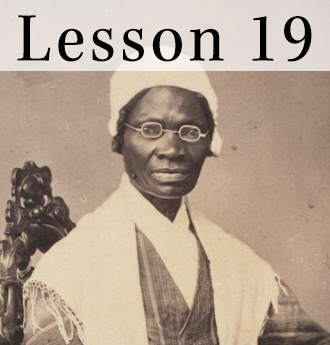The Resource Center » Level 3 » Unit 3 »
Lesson 19: How Has the Equal Protection Clause of the Fourteenth Amendment Changed the Constitution?

Lesson Purpose
Lesson Objectives
- define equal protection of the laws,
- explain why neither state governments nor the national government can deprive people of equal protection of the laws,
- explain the “separate but equal” doctrine of racial segregation and why the Supreme Court abandoned it in Brown v. Board of Education,
- describe the categories that the Supreme Court now uses to decide cases challenging governmental actions that treat some people differently from others, and
- evaluate, take, and defend a position on how conflicts between or among rights should be resolved.
Lesson Terms
Lesson Biographies
Lesson Court Cases
Case Summary
On October 15, 1872, Virginia Minor applied to register to vote in Missouri. The registrar, Reese Happersett, turned down the application, because the Missouri state constitution read: "Every male citizen of the United States shall be entitled to vote." Mrs. Minor sued in Missouri state court, claiming her rights were violated on the basis of the Fourteenth Amendment.
Question(s)
Does the Fourteenth Amendment protect the voting rights of women?
Answer(s)
No. In a unanimous opinion the court held that while women were citizens of the United States, and were, even prior to the passage of the Fourteenth Amendment, voting rights were not a "necessary privilege and immunity" to which all citizens are entitled.
See: 88 U.S. 162 (Wall.)
Lesson Primary Sources
Common Sense is a pamphlet, written anonymously by Thomas Paine, giving arguments for American independence from Britain. Paine outlines his ideas of government and society, then proceeds into the tyrannies of monarchies and the aristocracy, and posits what an effective American government might look like.






